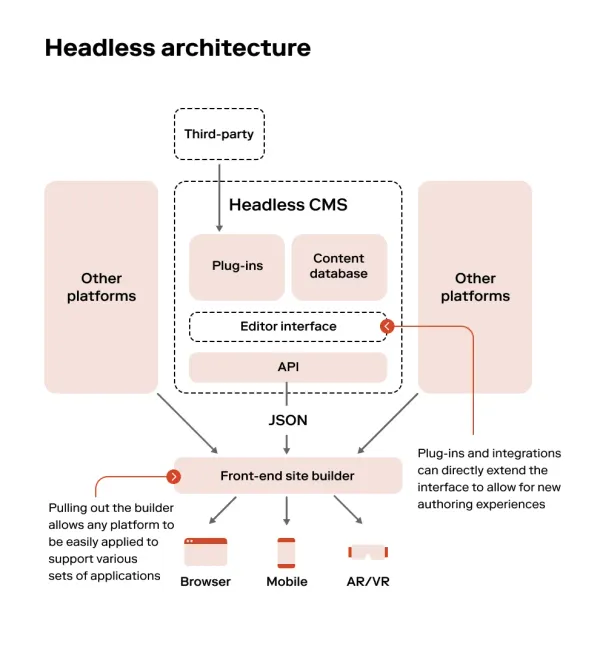
Headless: 10 Reasons Why Building Modern Websites and Applications This Way Makes Sense
Discover 10 key reasons why companies switch to headless. Speed, security, scalability — also available on the Oroom.One platform.
Headless: 10 Reasons Why Building Modern Websites and Applications This Way Makes Sense
Web technology is evolving faster than ever. Companies need solutions that help them move quickly, scale efficiently, and stay in control of their digital ecosystem. One of the most future-ready approaches today is headless architecture — a model used by platforms like Oroom.One, which combines CMS, CRM, and Marketing Automation in one unified panel.
Headless separates the frontend from the backend, giving businesses and developers unmatched flexibility, speed, and scalability. Below are 10 reasons why more and more organisations are moving in this direction.
1. Flexibility that gives your business a real advantage
In a headless setup, frontend and backend exist independently. That means you can:
- change the design without touching the business logic,
- launch landing pages without affecting the backend,
- develop multiple frontends simultaneously (web, mobile app, client portals).
In Oroom.One, this is the default model — one backend powering multiple digital channels.
2. Significantly faster performance
Headless allows you to build ultra-light, high-performance interfaces without the limitations of traditional CMS platforms.
This results in:
- faster loading times,
- better Core Web Vitals,
- higher SEO rankings,
- improved conversion rates.
3. A higher level of security
Since the frontend isn’t tied to the backend, the risk of attacks is dramatically reduced.
Headless systems:
- hide backend access behind APIs,
- eliminate plugin vulnerabilities,
- allow separate security layers for each component.
Oroom.One adds even more: 2FA, request logs, and integration monitoring.
4. Scale exactly where you need it
If traffic grows — scale the frontend.
If your database expands — scale the backend.
No need for painful rebuilds or infrastructure overhauls.
This approach is ideal for portals, ecommerce, and education platforms.
5. Better UX and modern interactive interfaces
Headless enables advanced UX:
- dynamic interfaces,
- product configurators,
- interactive dashboards,
- PWA applications.
The frontend behaves more like a native application than a classic website.
6. True omnichannel from a single backend
This is one of the biggest advantages of headless architecture.
You can publish content and data from one panel to:
- your website,
- mobile app,
- learning platform,
- B2B portal,
- marketplaces,
- partner systems.
In Oroom.One, CMS, CRM, and Marketing Automation all work on the same data source — no duplication.
7. Integrations that actually work
Headless integrations are stable, predictable, and easier to monitor.
You can:
- log every API request,
- view integration errors,
- easily connect ERP, CRM, marketing automation, and more.
Oroom.One provides full visibility into integration status and event history.
8. Longer project lifespan
Redesigning the frontend doesn’t require changing the backend.
Your backend can operate for years while the frontend evolves freely.
This dramatically reduces long-term development costs.
9. Total freedom for your tech team
Developers can use React, Next.js, Vue, Svelte or any modern framework.
The backend stays independent — API doesn't limit the frontend.
This also makes it easier to hire talent and scale your tech team.
10. A future-ready digital foundation
Headless naturally supports the technologies shaping the coming years:
- AI,
- personalisation,
- automation,
- microservices,
- multi-channel delivery.
It’s the architecture built for businesses that want to grow, scale, and gain a competitive technological edge — exactly what Oroom.One is designed for.
Summary
Headless is not just a trend — it’s a modern, practical architecture chosen by companies that want maximum flexibility, speed, and long-term control over their digital products. With platforms like Oroom.One, offering a headless CMS, CRM, and Marketing Automation in one place, implementing headless is easier and more efficient than ever.
If you're considering modernising your website, ecommerce, portal or training platform — headless is a direction worth exploring.

